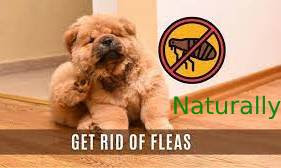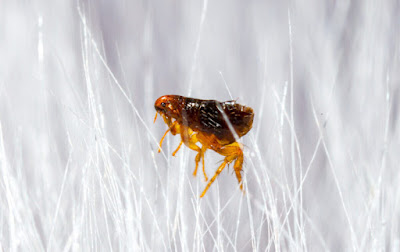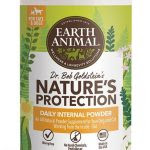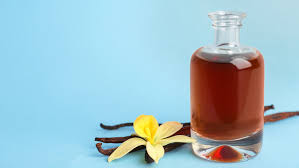How to Naturally Prevent and Get Rid of Fleas on Dogs
Fleas are a dog owner's worst nightmare. Fleas not only annoy your dog and cause excessive scratching, but they also deposit their eggs in your furniture, carpet, and anyplace else they may get into your home.
We urge that you follow your veterinarian's recommendations, but if you prefer a more natural approach, the good news is that there are many of natural alternatives to cure fleas in dogs without resorting to chemical treatments. If you're wondering how to get rid of fleas on dog hair, dog skin, inside your home, and even in the yard, keep reading to learn the best 30 home remedies for treating fleas with all-natural materials.
Fleas are described in detail
It's possible that your dog has fleas if they can't stop scratching. Fleas are parasitic insects that feed on your dog's blood. This reddish-brown bug, which is about an eighth of an inch long, can jump up to 12 inches with its enormous rear legs. Fleas may migrate from one host to the next, giving your pet their new home and breeding site. One mature female flea spawns at least 27 flea eggs every day, but many can lay up to 50.
There are around 2,200 types of these microscopic parasites in the globe, according to the AKC. Ctenocephalides felis, sometimes known as the cat flea, is the most frequent in the United States. Yes, your dog may become infested with cats, which is humorous. The cat flea's diet includes anything from dogs to cats to foxes and wolves, resulting in itchy bites all over your pet.
How to tell if your dog has fleas
A flea bite is extremely microscopic, making it difficult to detect. Bite marks show on your pet as red, raised dots. Unless they're inflamed from itching, these patches can be missed in your dog's fur since they're smaller than most insect bites. Fortunately, there are simpler techniques to check for an infestation in your dog.
To begin, look for fleas or flea filth, commonly known as flea droppings, on your pet. Fleas are most usually seen on the tummy, neck, ears, tail base, and lower back of your dog. Look for movement by combing back their fur (easiest on light-colored fur).
It's time to check for flea filth if you can't capture the fleas in the act. These black flecks of dried blood, which resemble pepper, are flea droppings. To capture flea filth, our veterinarians recommend combing a flea comb through your dog's coat. To establish that the black specks are droppings, rehydrate them with a moist paper towel. The flecks should go from black to brown to crimson in hue.
Here are some signs to look out for if you've been bitten by a flea:
- Scratching and itching
- Irritation of the skin
- Hair loss
- Scabs
- Pale gums (rare cases for large infestations)
Are fleas visible?
Excessive scratching and the obvious appearance of a cyst (especially on the paw area, which is where fleas like to target) are clear clues that your dog may have fleas. But can you see fleas? And if that's the case, what should you be on the lookout for?
Is it true that fleas are black? Fleas are sometimes shown in cartoons as teeny-tiny black specks, although they are actually reddish-brown in colour. Fleas are theoretically visible to the human eye, but without a magnifying glass or microscope, it's impossible to determine their colour or see what they truly look like. If you look closely at a flea, you'll see that it's not just reddish-brown in colour and has no wings, but it also has lengthy rear legs.
Fortunately, fleas, like most things, have a kryptonite. At the very least, the larvae do. "Flea larvae will perish when exposed directly to sunlight," according to Common Pests. That is, however, merely the larvae. While many people assume that light repels fleas, it actually helps them hide better.
"This is incorrect," says Common Pests, "since fleas are attracted to light and prefer to burrow deep into carpet and fur." "Body warmth, carbon dioxide, and vibrations attract them."
When to visit the vet
Before using natural flea cures on your dog, always consult with your veterinarian and discuss treatment alternatives.
Take your dog to the doctor if you find them scratching or chewing themselves to the point of being bloody, causing major hair loss, or being badly irritated. These actions might indicate a flea bite allergy, which can continue for up to three weeks, or a more serious problem.
Home Remedies To Get Rid of Fleas on Your Dog
If you suspect your dog is itching because of fleas, there are several flea home cures for dogs to select from. We have many of ways to cure fleas on dogs without using pesticides, whether it's a homemade collar, comb, dip, scrub, or something else.
Light and Heat
Trap for light
A light trap attracts fleas by combining light and heat. A yellow-green light bulb dangles over a sticky pad in the flea trap, trapping them until they die or are disposed of. The illumination in light traps alternates between on and off. Fleas are fooled into thinking the light is a host-source and leap into the trap when bulbs are on for a certain duration, such as 10 minutes and then off for 5 seconds.
Set up the light trap in your house to trick fleas into falling into the trap.
Washes, Sprays, Dips, and Rubs
ESSENTIAL OILS FLEA SPRAY
Some essential oils can be used to treat fleas in dogs. Natural flea repellents include citronella, eucalyptus, peppermint, tea tree, and rosemary. If your dog isn't afraid of a spray bottle, dilute a few drops of your favourite essential oil in 300ml-400ml water and spray straight on his coat. It's crucial to remember that some essential oils, such as tea tree oil, may be extremely poisonous to dogs if not properly diluted (.1 percent -1 percent ). Do not give your pet a DIY essential oil treatment unless you've checked its safety on a reputable website like
petmd.com and spoken with your veterinarian.
Walk Your Dog With Love's "An Ounce Of Prevention" is our suggested essential oil flea repellant.
This essential oil blend from Walk Your Dog With Love is one of our favourites. The remedy is all-natural, inexpensive, and extremely efficient against fleas, ticks, and other nasties. Furthermore, the oil combination is non-toxic and healthy for both dogs and their owners. It may be seen on their website here. (We also like their dog harnesses, which are fantastic!)
APPLE CIDER VINEGAR AND SALT FLEA SPRAY
The beauty of apple cider vinegar is that it is a natural approach to cure fleas on dogs by balancing a dog's pH levels, resulting in an environment that is healthy for your dog but unsustainable for fleas. Mix six cups apple cider vinegar with four cups water, add a pinch of sea salt, and spritz your dog's coat immediately. Make sure you stay away from your dog's eyes.
Garlic
Fleas despise the scent of garlic in the same way they despise the smell of vinegar. Garlic also has antifungal and anti-parasitic characteristics that repel fleas, making it a simple and natural flea treatment for dogs.
Whole Dog Journal suggests putting a little less than one crushed garlic clove into your dog's food every day to get rid of fleas (work your way up to one garlic clove so your pooch gets used to it). However, it's recommended to get advice from a veterinarian first.
Dawn
Dawn dish soap, according to Pest Policy, may also be used to get rid of fleas on pets. Dawn kills fleas from your dog's coat in only a few minutes. Wet down your dog with warm water and lather on some Dawn dish detergent to get rid of fleas on dogs. After rinsing it off, the fleas should be dead in a matter of minutes. After the bath, use a flea comb to go over your dog's coat; you should observe dead fleas dropping into the comb.
LEMON BATH
This flea-free lemon bath is simple to make and will leave your cat feeling fresh. To cure fleas in dogs naturally, dilute half a cup of freshly squeezed lemon juice in two cups of water, then add a squeeze of your regular pet-friendly soap or shampoo.
LATHER BATH
Existing fleas will be killed by any pet-friendly shampoo that forms a lather. When it comes to flea treatments, natural is always the best option, so look for an organic pet shampoo that is free of chemicals. Allow the shampoo to do its work for a few minutes once your dog has been suitably lathered. This is an excellent technique to get rid of existing fleas before going on to flea prevention.
This shampoo is recommended for any pet owner looking for a strong flea shampoo made with natural components. This shampoo kills fleas on contact, may be used with spot-on flea treatments and flea collars, is safe for dogs and puppies, and repels fleas for up to seven days.
Flea and tick discomfort can be relieved with this natural mixture including neem and citrus. This shampoo is not intended to treat a flea infestation; instead, we recommend the TropiClean Maximum Strength formulation, which may be found above.
Citrus
It's not as simple as strewing lemons about the house to get rid of fleas, but citrus is a tried-and-true natural flea-killing cure. Citrus extracts, such as linalool and D-limonene, are natural flea repellents that are effective against both adults and eggs. Citrus compounds, such as lemon juice, have a drying effect on fleas, similar to diatomaceous earth. Citrus destroys fleas' protective covering when they come into touch with it, making it hard for them to retain moisture in. This causes the flea to dehydrate and die.
How to use: To use in your house, buy or prepare your own citrus repellent. If you're going to buy one, double-check the label to make sure it states it's safe for pets. As needed, spritz the spray bottle in various areas of your home.
ROSEMARY DIP
If your dog likes playing in the water, this Rosemary bath will appear to be more of a game than a flea treatment. Fresh rosemary leaves are steeped in boiling water, then strained and diluted in warm water. Pour the mixture on your dog and let it dry naturally after the water has reached a suitable temperature.
NEEM OIL WITH MANY USES
One of the lesser-known flea remedies is neem oil, which is a natural insect repellant. If you can get your hands on this oil, which is native to Burma, Sri Lanka, and parts of India, you may use it straight on your dog's hair, mix it in with your regular natural dog shampoo, or dilute it to make your own flea spray.
SOAPS WITH ORGANIC INGREDIENTS
You may bathe your dog as usual and receive a flea-free and great-smelling dog by using organic soaps such as organic peppermint soap or organic Rose soap for your regular dog shampoo.
SPRAY FOR AROMATHERAPY
If you know how to prepare aromatherapy, you can produce a batch that will not only treat a flea infestation but also prevent future infestations while also functioning as a natural soother for your dog. Add drops of Atlas cedar oil, lemon eucalyptus oil, geranium oil, bay laurel oil, common myrrh oil, and lavender oil to sweet almond oil as a foundation oil.
RUB WITH COCONUT OIL
Is there anything coconut oil can't help with? When it comes to flea treatment, coconut oil can aid in a variety of ways. A spoonful of coconut oil rubbed straight into your dog's coat repels fleas while also making the hair glossy and reducing body odour. Coconut oil's antibacterial, antifungal, and antiviral qualities, when added to your dog's regular diet, can even help treat intestinal parasites.
Sulfur
is a mineral that is found in the soil.
If you believe your dog has consumed a dangerous amount of sulphur, call Animal Poison Control right once at (888) 426-4435.
To get rid of fleas, spray your yard with sulphur. Sulfur interferes with the fleas' energy generation when they come into touch with it or eat it, putting a stop to their infestation.
Sulfur should only be used outside to cure fleas. Apply the powdered version to your lawn, shrubs, and other outdoor areas. Only use liquid sulphur to safeguard your favourite plants. To avoid harming your plants, use a sifter to apply the powder and make sure you can see the colour of your plants through the powder.
Nematodes
Nematodes are little worms that devour insect larvae and dwell in the soil. Some species can be quite beneficial in the fight against termites, grubs, and fleas. Order them online, mix them with water, and then spray them all over your yard. Carefully read the instructions on the package; it's critical to use the exact amount of water.
Collars
FLEA COLLAR WITH LAVENDER OR CEDAR OIL
A homemade flea collar is a clever technique to keep your dog's flea protection consistent without spraying or rubbing the mixture on them. Purchase or construct a basic collar or bandanna, then dilute a few drops of lavender or cedar oil in water and apply to the collar or bandanna immediately.
FLEA COLLAR WITH VODKA
Who knew that treating fleas in dogs with vodka could be so effective? Purchase or build a basic dog collar, then soak it in a teaspoon of unflavored vodka and dry it. You could also add a few drops of your favourite essential oil to make a scented collar, but for dogs that don't enjoy the aroma of essential oils, just using vodka is a decent option.
Combs and Sachets
COMBINATION OF LEMON
Lemon is well-known for its ability to repel and destroy fleas while remaining fully safe for pets and people. Simply dunk your dog's regular comb or brush in fresh lemon juice and comb or brush his or her hair as usual. A towel drenched in lemon juice can do the trick for a short-haired breed.
COMBAT WITH FLEAS
This is one approach to cure fleas that we would recommend if you already have a store-bought flea comb, and it doesn't require any further purchases. Flea combs are meant to eliminate fleas and their eggs from your dog's coat without the use of chemicals. If your dog already has fleas, this is an excellent approach to get rid of them before utilising additional flea home cures for dogs to prevent future infestations.
SACHET DE FLEA
If your dog doesn't appreciate being sprayed or having treatments applied straight to his coat, create this flea sashay instead. Fill a small bag with lemon peel, dried lavender buds, and cedar chips, which you can buy or create from breathable fabric like hessian or muslin. Place the sack near your dog's sleeping area after tying the top. After roughly a month, the combination may lose its efficacy, at which point you may simply unzip the bag and replace with fresh components.
Food & Drink
DRINK WITH VINEGAR OR APPLE CIDER VINEGAR
Try diluting vinegar or apple cider vinegar in your dog's drinking water to attack and prevent fleas from the inside out. You'll want to give them a taste test first to make sure they like it, as you don't want them to stop drinking their water completely. A recommended ratio to strive for is one teaspoon of vinegar for every four glasses of drinking water. Not only will you be able to keep fleas at bay, but your dog's coat and skin will benefit as well.
YEAST FROM A BREWER
Starting from the inside out is perhaps the least obvious technique to organically cure fleas on dogs. Healthy dogs are less likely to host fleas, and adding a tiny quantity of brewer's yeast to your dog's food is one approach to improve your dog's health while warding off fleas. A half teaspoon of brewer's yeast added to your dog's regular food is an efficient flea treatment.
This powdered supplement, created by Dr. Bob Goldstein, includes natural components that, when consumed, aid in the natural prevention of fleas and ticks on dogs.
The House Is Infested With Fleas
What do you have when your dog has fleas and you let him in the house? Of sure, there are fleas in the house. If you're wondering how to get rid of fleas on dog bedding and other objects in your home that your dog has access to, keep reading for a list of options.
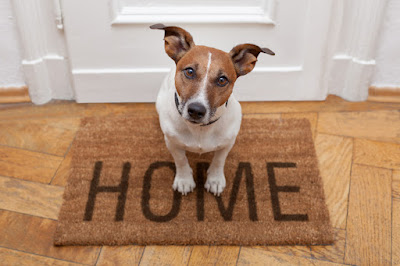
WASHING MACHINE
When you have fleas in the house, the first step is to gather any soft furnishings your dog uses, such as blankets, towels, beds, cushions, and mats, and wash them all in the washing machine. It's a major job, but it's necessary to deal with your current flea infestation.
Flea spray made from natural ingredients
To get rid of fleas in your house, use a herbal flea spray, according to quick home remedies. This non-toxic flea cure is safe to use around dogs and children because it is produced from items available around the house.
In a big spray bottle, combine 4 litres vinegar, 2 litres water, 500 mL lemon juice, and 250 mL witch hazel to make a flea spray. Before using the solution in your house, make sure you vacuum thoroughly, putting the contents into an outdoor container, and wash any contaminated bedding or cushions. After that, use a vigorous spray to spread the natural flea treatment to your home, covering carpets, furniture, pet beds, window sills, and floors.
DRY TUMBLE
It's vital to wash your soft furnishings, but placing them all in the tumble dryer will be even more effective. Fleas at all phases of development, including eggs, larvae, and adult fleas, may be killed in about 15 minutes in a hot tumble dryer.
VACUUM
When it comes to flea treatment at home, your vacuum cleaner will be your best friend. The fleas are drowned as soon as they are picked up by the vacuum cleaner, thus a water-based vacuum cleaning system is excellent. When using a dry vacuum cleaner, keep in mind that the fleas you gathered will want to flee as soon as you open the canister or bag, so do it right away and outside your home. To keep fleas from escaping, sprinkle your vacuum cleaner canister with water as soon as you open it.
Baking Soda
You can dehydrate fleas and their eggs by pouring baking soda straight over your carpet and then brushing side to side with a broom to penetrate and disrupt the carpet fibres. Allow the baking soda to sit on your carpet overnight, then vacuum up the baking soda and fleas the next morning.
SALT
Sprinkling salt on your carpet and soft furnishings before vacuuming the next day will dehydrate and kill fleas and flea eggs, just like the baking soda approach above. Although salt is an effective flea treatment, it should be used with caution since if not properly cleaned out after vacuuming, it can cause your vacuum cleaner to rust.
SPRAY OF LEMON
Lemon spray is an excellent flea treatment that does not need vacuuming afterwards. Boil a thinly sliced lemon in water for 10 minutes, then set aside to cool overnight. Fill a spray bottle halfway with the mixture and softly wet your carpet and all soft furnishings in your house in the morning.
CLEANING WITH STEAM
Fleas are drowned on impact when you steam clean your carpets and soft furnishings, and your house will look and smell beautiful.
DIATOMACEOUS EARTH
Diatomaceous earth is a fine powder made from the tiny leftovers of algae, curiously enough. We realise it seems unusual, but sprinkling diatomaceous earth on your carpet and letting it stay for 48 hours is an extremely efficient natural flea treatment. Block off the area so that no one walks over it during this period, especially your dog. After that, thoroughly vacuum the carpet. To avoid another cycle of infestation, diatomaceous earth can be used to dry up and destroy flea eggs.
A FLEE TRAP
If you're looking for a simple way to get rid of fleas in your house, this flea trap is a brilliant concept that doesn't require you to spray anything on your soft furnishings. Fill a plate or bowl halfway with warm water and a few drops of your favourite dish soap, then set it on the floor overnight. The mixture's high viscosity works as a glue, trapping fleas on the surface. Simply drain the mixture and thoroughly wash your plate or dish in the morning.
PREVENTION WITH ROSEMARY
If you have a pestle and mortar, you may make a batch of Rosemary powder to help avoid flea infestations in the future. To produce a fine powder to sprinkle about your home, combine peppermint, wormwood, fennel, and rue with your choice of other herbs.
In the Backyard, There Are Fleas
It doesn't imply they aren't there just because you can't see them. If your dog has fleas, there's a strong possibility they're hiding in the darkest, moistest corners of your yard as well. Natural flea cures are usually the best when it comes to outdoor flea remedies, and here are our top recommendations for treating fleas in the garden.
KEEP YOUR GARDEN AS SIMPLE AS POSSIBLE.
Fleas like to hide, thus the more barren your garden is, the less likely they are to pick it as a hiding spot. Keep your landscape weed-free by trimming or removing overgrown shrubs and hedges.
WARNING: THE DAMP
Fleas like moist, gloomy environments and avoid direct sunshine as much as possible. Examine your garden from the perspective of a flea, and consider where they'd most likely hide. Remove twigs, dead leaves, and extra mulch from under shrubs with this in mind. Allow as much sunshine as possible into your lawn and avoid overwatering.
WORMS OF THE GOOD KIND
Unless we're talking about a specific form of nematode called Steinerma Carpocapsea, no one enjoys the notion of worms running amok in their yard. Fleas are eaten by these small worms, which are perfectly harmless for your dog and yard.
PLANTS THAT KILL FLEAS
Planting plants that naturally repel fleas is a good approach to cure fleas organically. Natural flea repellents for your garden include spearmint, chrysanthemums, lavender, and Penny Royal, among many more. Before going to your local plant nursery, you might want to conduct some research to see which plants would thrive in your location.
An Important Note About Essential Oils
You may have noticed that this post mentions a lot of essential oils in the numerous flea home treatments for dogs. Natural essential oils may be really helpful when it comes to flea cures, and there are a variety of smells to choose from. The essential oils you have access to, as well as your own tastes, will ultimately determine your decision.
Because dogs' noses are so sensitive, we recommend smelling a little quantity of essential oil near your dog first to see how they react. Dogs, like people, have some fragrances that they like over others and others that they find practically revolting. In your effort to cure fleas organically, bear in mind your dog's preferences and avoid spraying an essential oil they don't like all over their bedding.
Imagine sleeping with your head on a pillow perfumed with your least favourite smell every night, and you'll realise how important it is to allow your dog have a choice in the odours and substances you use.
If you've ever wondered how to get rid of fleas on dog bedding in your house, yard, or even on your pet, we hope these flea home treatments have helped.
keep your dog’s items flea free with heat
Heat is your secret weapon for keeping fleas out of your dog's beds, linens, clothing, and toys. Everything that can be cleaned in hot water and dried on high heat should be washed once a week. Fleas won't be able to withstand the double dose of heat.
The Danger of Fleas
It may start with your dog scratching, but it's much more. If you don't recognise the indications that your dog has fleas, you're putting your pet in danger. Fleas are parasitic insects that transmit a variety of illnesses that can harm your dog.
When you detect fleas early, you're preventing the following:
- Tapeworms. Tapeworm larvae can be transmitted to your pet if it eats an infected flea with tapeworm larvae.
- Anemia. An overabundance of fleas on pups can result in significant blood loss, which can lead to tissue damage and even death.
- Allergic Dermatitis from Fleas (FAD). Flea saliva can cause allergic reactions in certain dogs. This might cause your pet to have severe immunological responses.
- Hemobartonellosis. Because this is such an uncommon ailment, most dog owners shouldn't be concerned. However, if your dog's spleen has been removed, this flea-transmitted condition might be fatal.
How to prevent a flea infestation.
The trick is to avoid a flea infestation before it occurs. In the long term, prevention tactics will save you time and trouble. In addition, your dog will appreciate you keeping the fleas at bay.
- Flea collars and spot treatments Before using flea prevention medications, consult your veterinarian to determine which products are best for your dog.
- Giving your dog a bath is a good idea. Regular flea inspections with a flea comb and washing will keep your dog clean and alert you if an infestation is developing.
- Gardening is a must. Maintain a well-kept yard for your pets. Trim the bushes and mow the lawn. Fleas will have less places to hide in your yard as a result of this.
- Maintain a regular cleaning schedule. A clean house, according to local lore, is a flea-free abode. Vacuum inside your house on rugs and carpets once a week to avoid any unwanted flea eggs from developing and dwelling in your home. Using moth balls within your vacuum cleaner bag to eradicate fleas picked up during the cleaning process is also a good idea, according to our veterinarians.
More Articles

